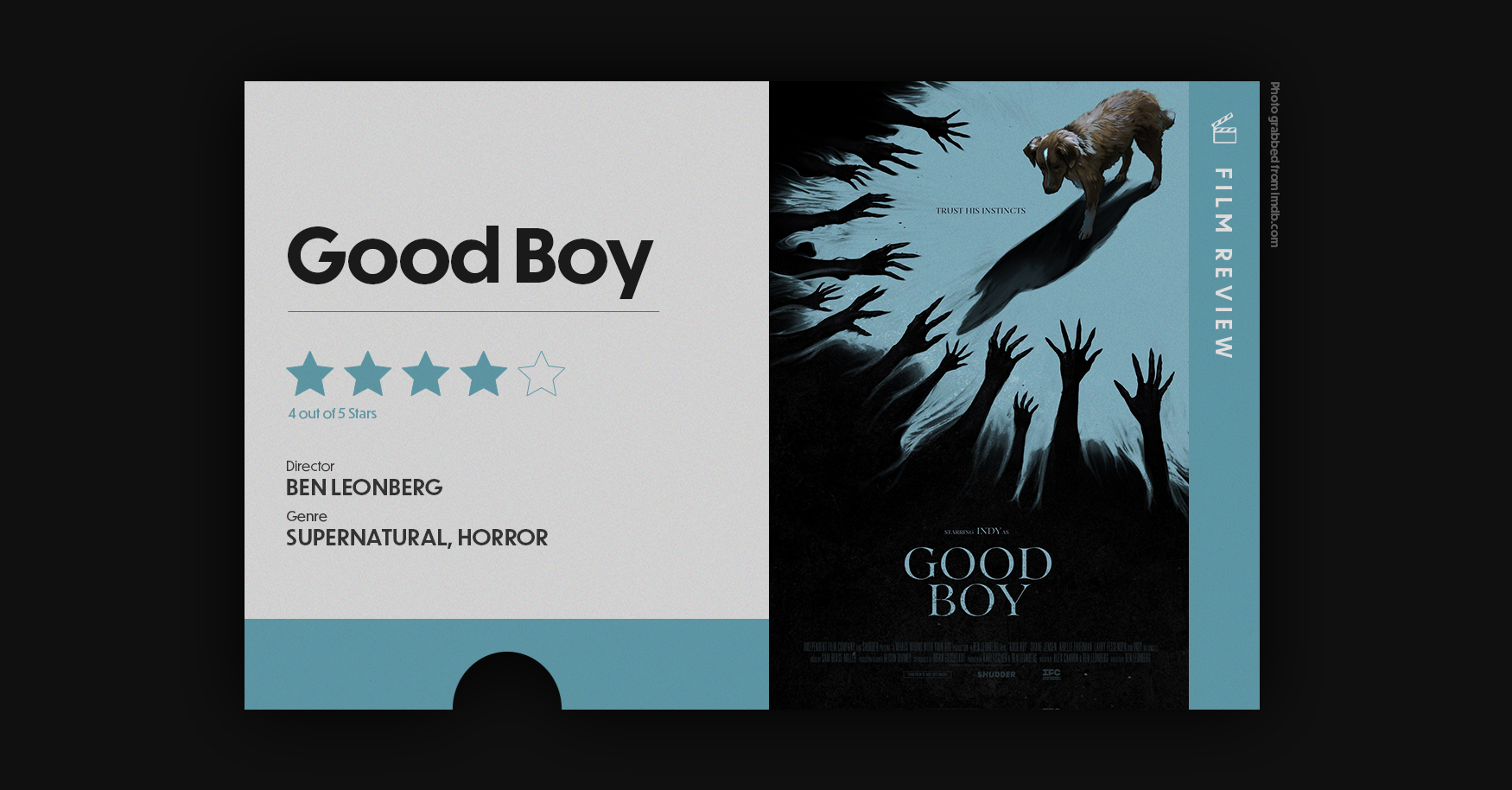Good Boy, released on Oct. 3 through Shudder, explores loyalty and the unseen terror through the unique perspective of a canine hero navigating supernatural darkness. Directed by Ben Leonberg in his feature directorial debut, the film was built around Leonberg's own dog, Indy.
The story centers on Indy, a devoted retriever who relocates with his owner, Todd (Shane Jensen), to a rural family home, where he encounters malevolent supernatural forces hidden within the property. As evil spirits, visible only to Indy, begin tormenting Todd, the courageous dog must battle these dark entities to safeguard his beloved companion.
Fetching the horror
Arriving with all the trappings of traditional supernatural horror, Good Boy establishes its credentials through a familiar vocabulary of dread. Leonberg understands the grammar of haunted-house cinema well enough to deploy it effectively: the isolated setting, the oblivious human, and the animal companion.
What the film captures best is atmosphere, for it highlights the weight of isolation in rural settings, and the particular dread of watching someone you love change in ways you can't articulate or prevent. Todd's decline also reads as classic possession: the physical deterioration, the sense that something else occasionally surfaces behind familiar eyes.
Leonberg stages these progressions with enough conviction that the supernatural explanation feels not just plausible but inevitable. This is a haunted house, Todd is being consumed by whatever inhabits it, and Indy represents the only line of defense against complete possession.
The horror elements function because they're treated as real within Indy's experience. There's no suggestion of unreliable narration or canine misperception—when the entity appears, it's tangible enough for Indy to attack, while being substantial enough to pose genuine danger. The film anchors itself to its premise—a straightforward supernatural horror elevated by its unusual protagonist, a creature feature that happens to star a golden retriever instead of a paranormal investigator.
Dog-eye’s view
The formal constraints of Good Boy function as the film's primary storytelling mechanism, not decorative choices layered onto conventional narrative structure. Leonberg commits entirely to positioning the camera at retriever eye-level—roughly two feet from ground—which fundamentally alters how spatial information registers.
The blurred faces extend this logic of restricted perception, translating canine visual processing into cinematic language. Dogs don't prioritize facial detail the way humans do; they track movement and broad silhouette instead. Whenever the film renders human faces as indistinct forms, it's converting biological limitation into aesthetic experience.
Leonberg’s technical choices create something more unsettling than just the typical traditional horror—a genuine sense of powerlessness. Indy cannot reach what he needs to reach, cannot communicate what he desperately needs to say, and cannot even make the humans understand what he perceives as obvious danger. The gimmick then stops feeling like a gimmick and starts functioning as genuine narrative architecture, where every technical choice reinforces Indy's fundamental helplessness despite his fierce devotion.
Barking up the wrong tree
And here's where Good Boy reveals its devastating hand: there is no entity.
What Leonberg has orchestrated is a profound bait-and-switch that recontextualizes everything the viewers have witnessed. The "supernatural forces" tormenting Todd, the "evil spirits" that only Indy can perceive, the "possession" slowly consuming his owner, are not manifestations of the paranormal. They're Indy's interpretation of something far more heartbreaking: terminal illness.
This is where the film's unconventional storytelling approach becomes essential rather than experimental. By committing so thoroughly to Indy's perspective, Leonberg has shown life through canine eyes, where a beloved owner's gradual deterioration from disease might genuinely register as invasion by malevolent forces. Dogs don't understand cancer or neurological disorders. They only know that something is wrong, that their person is changing, that there's a threat they cannot identify but must somehow fight.
What the film captures, in its aching sincerity, is the purest and most futile form of love: one that does not comprehend what it’s losing, only that it is losing it. By the final stretch, the supernatural has dissolved completely, yet the dread remains sharper than ever. The real ghost in the story is the one every pet endures: the slow vanishing of the world they know, the silence that follows when their person’s scent fades from the air.
Leonberg’s technical design—keeping the camera low, obscuring human faces, and rooting every frame in Indy's sensory world—does more than build tension: it builds empathy. When the final revelation arrives that the haunting was never supernatural but a reflection of Todd’s slow deterioration, it transforms Good Boy from a story about ghosts into one about grief.
The horror remains, but now it belongs to reality, not the spirit world. Leonberg uses the language of horror to articulate something more devastating: love made powerless by mortality. The film ends with both catharsis and with the echo of devotion struggling against inevitable loss. It is a cinematic reminder that oftentimes the scariest hauntings are the ones that come from loving someone you can’t save.
As the curtain draws, Good Boy unravels into something far more human than horror: the ache of loyalty that outlasts the one it was meant for, the echo of a footstep that never returns.
Lead a dog’s life with Good Boy, out now in cinemas.


